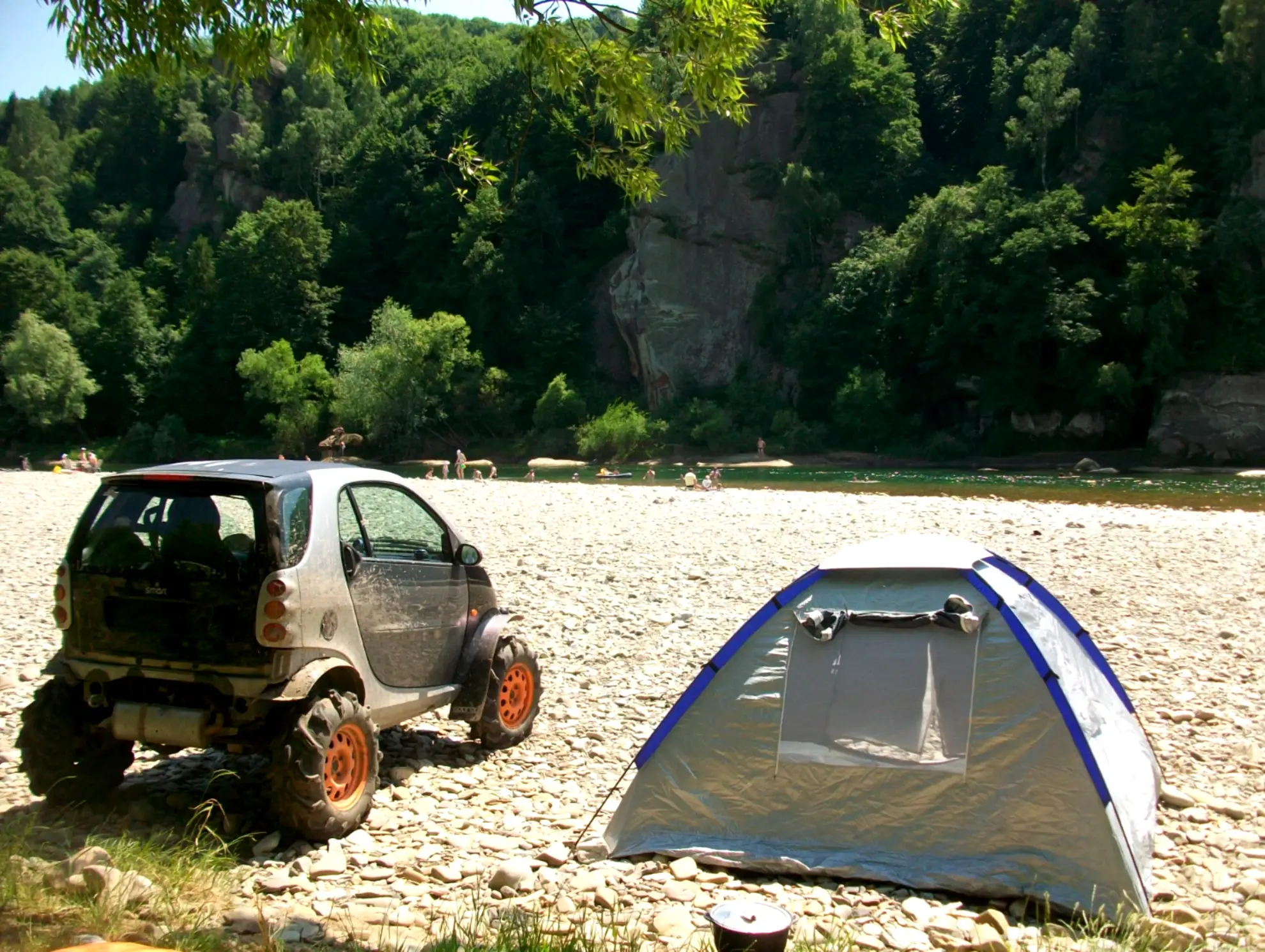Do you know, sometimes the craziest ideas are born not from an excess of free time, but from the desire to prove to yourself that the impossible is actually quite real. Imagine this: there is a small city car, the Smart Fortwo, designed to park in the narrow streets of a metropolis, save fuel, and put smiles on the faces of passersby. And now picture this little one suddenly getting quad bike wheels, clearance like a serious SUV, reduction gears, a redesigned suspension, a snorkel, and even a winch. Sounds like science fiction? That’s exactly what everyone thought, until I decided to build the world’s first off-road Smart, which competed on equal terms with prepared SUVs on the toughest trails. In this article I’ll tell the whole story — from the birth of the idea to the tests in the Carpathians and recognition in the world’s media.


How it all began: why Smart?
People often ask me: “Why did you choose the Smart Fortwo and not a UAZ or at least some old SUV?” The answer is simple: the whole idea lay in this oddity. After the Honda XR 125 motorcycle, I wanted something unusual, unique, something that would not just drive through mud but stand out among hundreds of identical cars. Smart seemed like the perfect base for several reasons. First, it’s a safety capsule with five crash-test stars — already a solid argument. Second, the economical turbo diesel with a consumption of only 4 liters per hundred is something many SUVs can only dream of. Third, the rear engine layout gave a chance for excellent weight distribution. And finally, the very fact: to turn a city baby into something it was never intended for — that’s a challenge impossible to refuse.

Engineering solutions: from clearance to reduction gears
To turn a little Smart into a machine capable of climbing rocks and plowing through mud, just putting on big wheels wasn’t enough. The main task was to raise the clearance to at least 35 cm. In the end, we managed to achieve even 36 cm — a figure that sounds serious even for a Jeep. But simply lifting the body wasn’t enough, because the load on the transmission increased many times. That’s where the homemade portal reduction gears came in, literally made “on the knee.” I chose a chain design because a chain forgives inaccuracies and withstands shock loads, unlike gears. We worked on them for a long time, adjusted them by hand, and when it all worked for the first time — that was a moment of true triumph.

Suspension and brakes: how to turn fragile MacPherson into a reliable double wishbone
The original Smart suspension, to be honest, was designed at best for city potholes. For off-road, it had to be completely replaced. I redesigned the front end into a double wishbone, because no one has invented a better setup yet. It gave softness, travel, and reliability. I used hubs from a “kopeyka” (VAZ-2101), but reinforced them, and on top installed Honda hubs with a standard 4×100 bolt pattern. The brakes turned out to be a mix too: discs from a Golf 3, calipers from VAZ 2108. It may seem like a strange set, but together they worked like clockwork. The widened track from 1.4 to 1.8 meters made handling stable, and the car itself after all the modifications handled even better than stock. The rear suspension I reinforced with struts from a Mitsubishi Outlander, and as a result, the car gained a true off-road character.

Engine and clutch: how a small turbo diesel turned into a beast
Many think: “Well, what’s the use of a small three-cylinder diesel?” I’ll tell you: with a turbo boosting 1.2 bar and torque from two thousand rpm, this engine turns into a beast. The dynamics are comparable to a 2.5-liter gasoline sedan, and the torque at the wheels exceeds 130 Nm. Of course, the stock clutch didn’t survive — it said goodbye after the very first forest trips. We had to reinforce it: increased the contact area, installed thicker friction pads, machined the pressure plate. After modification, the clutch handled loads the factory engineers could never dream of. The only problem was a burnt starter, but that was a trifle compared to the result achieved.

Cooling system and snorkel: protection from overheating and water
A true off-roader must be ready for heat, fords, and mud. The Smart overheated even in the city, so the radiator had to be replaced with a two-inch one from a Honda Civic. Three times thicker, five times more efficient — and the problem was gone forever. And with water I had to think: I made a snorkel, which looked rather unusual. The air rose up through a decorative cover, passed through the body’s ventilation channels, and went into the filter. It turned into a completely sealed air intake from above — and even deep fords stopped being a problem.

Additional modifications: bumper, winch, and interior
To feel confident on the trail, you need a power bumper. I made it from a driveshaft off a Lada — thin-walled, but incredibly strong. On it went a quad bike winch mechanism for 3500 pounds — about a ton of pull. That was enough to pull the car out even in the toughest conditions. For convenience, I brought the unwind handle outside. Inside, the cabin became Spartan: no carpet, only bare metal, which is easy to wash off mud. I added an oil pressure gauge and winch controls, including a wireless remote. Everything was practical, without unnecessary luxury.

Operating experience: Carpathians, competitions, and recognition
What is a real test for a homemade off-roader? Of course, real trails and competitions. The Smart took part in GPS orientation, where it came in first place, and only due to a stolen point did it lose the gold. In the Carpathians it completed the route on twenty liters of diesel, while other cars consumed about a hundred. The winch was needed only once, and another moment of “diagonal hang” was solved by five guys pushing the car. At the same time, the suspension, made by my own hands, remained alive and without wear after seven years of operation. Even Daily Mail wrote about this project, journalists and bloggers came. For me it became proof that the idea was not just crazy, but viable and successful.

The future of the project: new plans and personal changes
Over time I began to treat this Smart more carefully. If before I was looking for deep fords and extreme trails, now I want travels and beautiful roads. But there is another factor — family. When a child appeared, it became clear that a two-seater Smart was too cramped for us. Yes, it is still unique and brings joy, but in the future I’m thinking about a new project with a full four seats. And you know, no matter how hard it is, someday I’ll have to part with the Smart. But it will always remain for me more than a car — a true family member, a symbol of a dream, and proof that any idea can become reality.
The story of the off-road Smart Fortwo is not just a tale of rebuilding a car. It’s an example of how persistence, engineering ingenuity, and a bit of madness can turn a city baby into a conqueror of mountains and swamps. This project showed that even the most limited resources can be turned into a unique creation if approached with love. The Smart became for me not just transport, but the embodiment of an idea: the impossible is possible, if you truly want it. And perhaps it’s projects like these that inspire people to new discoveries, bold steps, and belief in their own strength. After all, if a little Smart could conquer the Carpathians, what prevents each of us from overcoming our own obstacles?
G. KOSILOV



